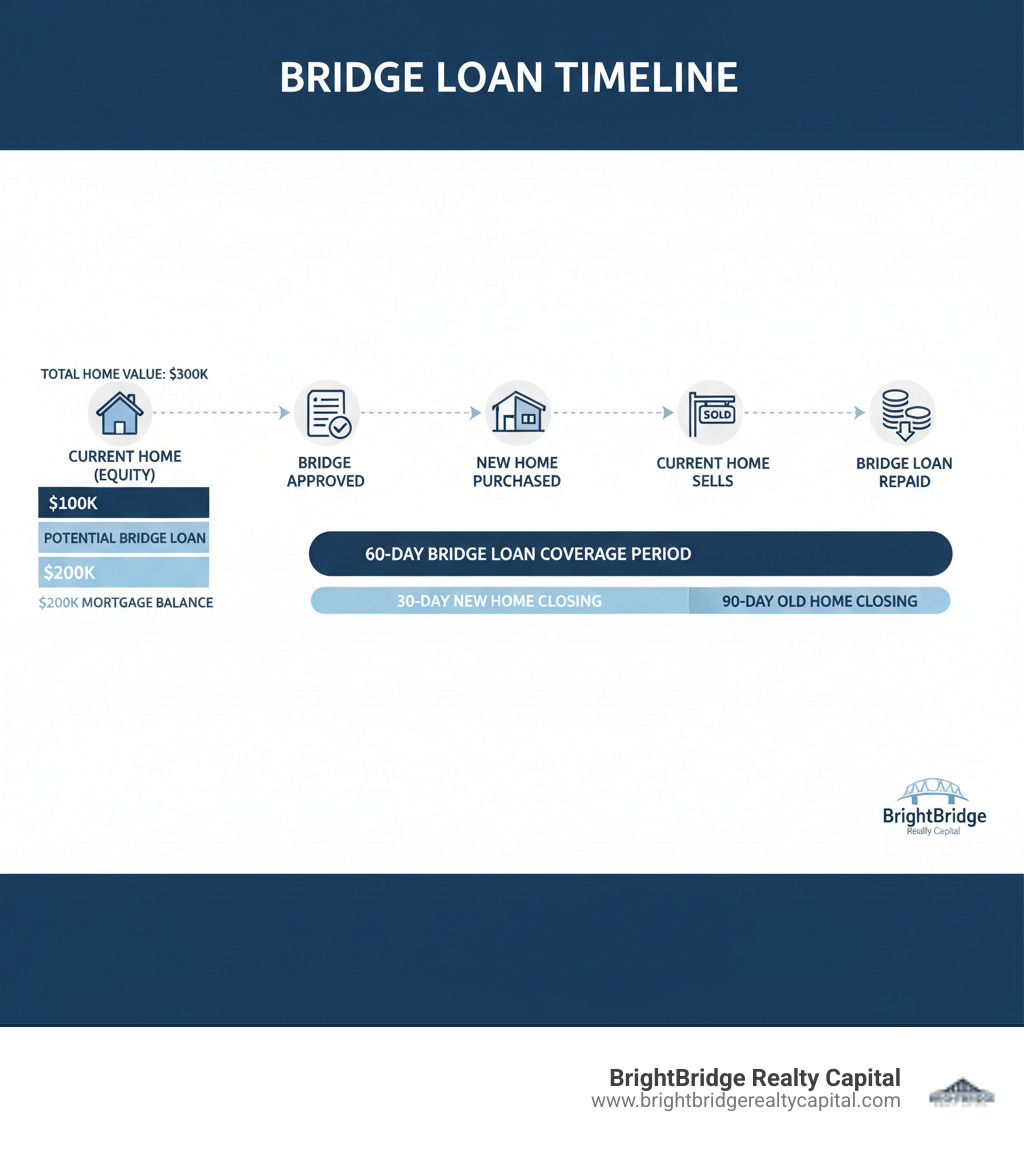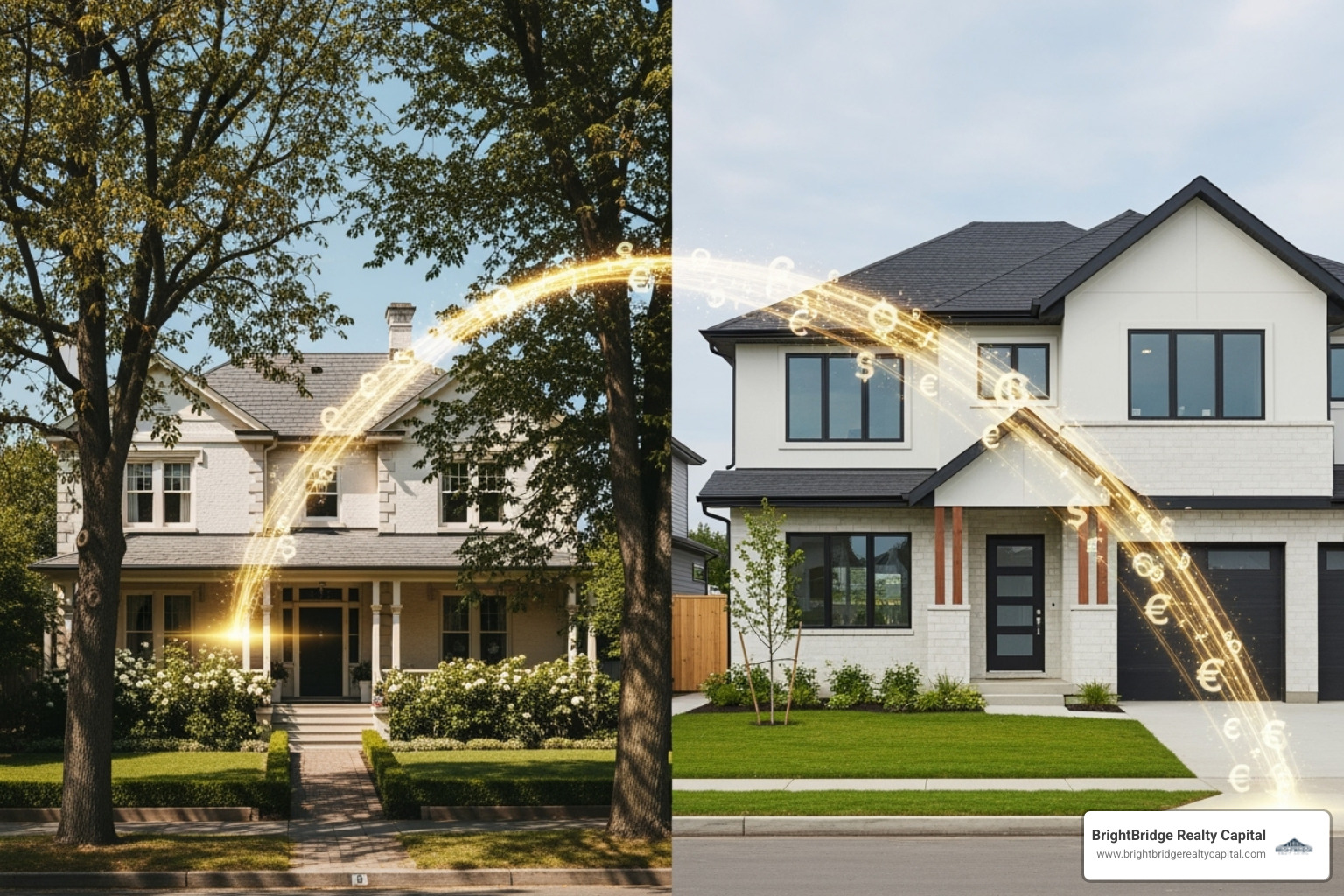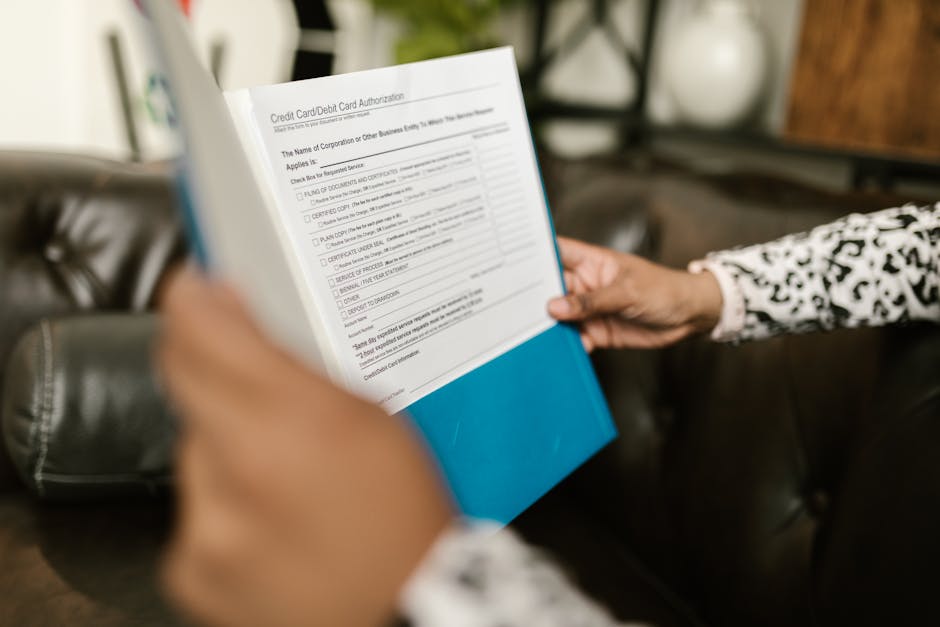Seamless Moves: Using a Bridge Loan When Buying Your Next Home

Why Timing Your Home Sale and Purchase Is the Hardest Part of Moving
Navigating the real estate market is a complex dance, and the most challenging step is perfectly timing the sale of your current home with the purchase of your next one. Sell too early, and you could face the logistical nightmare of moving twice and putting your belongings in storage. Buy too late, and you might miss out on your dream home. This timing dilemma is where many homeowners find themselves stuck, particularly in competitive markets where sellers hold all the cards.
A bridge loan when buying a home is a specialized, short-term loan designed to solve this exact problem. It uses the equity in your current home as collateral to provide the funds for a down payment on a new one. This temporary financing—typically lasting from six to twelve months—literally “bridges” the financial gap between your two transactions, empowering you to buy your next home before your old one is even sold.
Here's the basic flow:
- Borrow Against Your Current Home's Equity: You can typically access up to 80% of your home's appraised value, minus your outstanding mortgage balance.
- Use the Funds for Your New Home's Down Payment: This cash allows you to make a strong, non-contingent offer.
- Repay the Loan in Full: Once your existing home sells, the proceeds are used to pay off the bridge loan in a single lump sum.
In today's fast-paced real estate landscape, sellers are inundated with offers and rarely entertain those with a home sale contingency. A contingent offer is risky for a seller; if the buyer's home doesn't sell, the entire deal collapses, forcing the seller to put their property back on the market. A bridge loan eliminates this uncertainty by converting your “trapped” equity into liquid cash. For instance, if your home is valued at $300,000 and you owe $200,000, you have $100,000 in equity. A bridge loan is the key to unlocking that value when you need it most.
I'm Daniel Lopez, a senior loan officer at BrightBridge Realty Capital. With years of experience, I've guided hundreds of clients through the intricacies of using a bridge loan when buying a home. This comprehensive guide will demystify the process, breaking down how these loans work, what they cost, their pros and cons, and whether this powerful financial strategy is the right move for you.

Terms related to bridge loan when buying a home:
What Is a Bridge Loan and How Does It Work?
A bridge loan, often referred to as gap financing or an interim financing solution, is a purpose-built financial tool that closes the time gap between selling an existing property and acquiring a new one. Unlike a traditional mortgage designed for long-term ownership, a bridge loan is a short-term instrument, typically with a term of 6 to 12 months. Its primary function is to allow you to tap into your current home's equity and use it as a down payment for your next property. This immediate access to funds is a game-changer, transforming you from a hopeful buyer with a contingent offer into a powerful buyer who can compete with all-cash offers, a significant advantage in any seller's market.
The Mechanics and Repayment of a Bridge Loan
A bridge loan when buying a home is fundamentally a secured loan, with your current property serving as the collateral. Lenders determine the maximum loan amount by calculating your available equity. This is not simply your home's value minus the mortgage; lenders apply a risk-management formula, most commonly the 80% combined loan-to-value (CLTV) rule. This rule means the total debt against your property—your existing mortgage plus the new bridge loan—cannot exceed 80% of its appraised value. This buffer protects the lender in case the property sells for less than expected.
Let's walk through a detailed example: Suppose your current home is appraised at $500,000, and you have an outstanding mortgage balance of $200,000. A lender applying the 80% LTV rule would cap the total financing at $400,000 (80% of $500,000). To find your potential bridge loan amount, they subtract your existing mortgage from this cap: $400,000 - $200,000 = $200,000. You could therefore be eligible for a bridge loan of up to $200,000, less any closing costs. This equity extraction process provides the substantial cash needed to make a confident, non-contingent offer on your new home.
Repayment is designed for simplicity and to avoid financial strain. Unlike a traditional mortgage with its monthly principal and interest payments, most bridge loans are structured with interest that accrues and is paid back in one lump sum from the proceeds of your home sale. When your old home sells, the escrow agent or closing attorney manages the disbursement of funds. Their first step is to pay off the existing mortgage and the bridge loan (both principal and all accrued interest). Once these debts are cleared, you receive the remaining profit. This structure is highly advantageous as it prevents you from having to juggle three separate housing-related payments at once: your old mortgage, your new mortgage, and the bridge loan.

Pros and Cons of Using a Bridge Loan When Buying a Home
A bridge loan when buying a home can be an incredibly effective strategy, offering a clear path to your next home in a complex market. However, its power comes with specific risks and costs that must be carefully weighed.

Key Advantages: Gaining a Competitive Edge
The single greatest benefit of a bridge loan is the power to make non-contingent offers. A home sale contingency clause makes your offer dependent on the successful sale of your current property. For sellers, this represents a significant risk and delay. By using a bridge loan to secure your down payment, you remove this contingency, making your offer nearly as attractive as an all-cash bid and giving you a decisive advantage in bidding wars.
Other key benefits include:
- Unmatched Speed: Bridge loans are designed for rapid execution. While a traditional mortgage can take 30-45 days to close, bridge loans can be funded in a matter of weeks, and sometimes even faster. At BrightBridge Realty Capital, our in-house, direct lending model allows us to close in under a week, enabling our clients to seize opportunities without delay.
- Ultimate Convenience: The logistical stress of moving is immense. A bridge loan allows you to avoid moving twice. You can purchase and move into your new home on your own schedule, then prepare and sell your previous property without the pressure of being displaced or living in temporary housing. This seamless transition is a major quality-of-life benefit.
- Enhanced Financial Flexibility: Accessing your equity upfront provides more than just a down payment. A larger down payment (ideally 20% or more) on your new home allows you to avoid costly private mortgage insurance (PMI). Furthermore, it can strengthen your application for your permanent mortgage, potentially helping you secure a lower interest rate and more favorable terms for the life of the loan.
Potential Disadvantages and Risks to Consider
The convenience and power of a bridge loan are not without their price. It's crucial to be aware of these potential downsides:
- Higher Costs and Fees: Bridge loans are short-term, higher-risk products for lenders, and their pricing reflects that. Interest rates are typically higher than those for conventional mortgages. Additionally, you will incur origination and administrative fees, which can range from 1% to 3% of the loan amount. On a $150,000 bridge loan, this could mean $1,500 to $4,500 in upfront costs.
- Significant Financial Strain: If your current home doesn't sell as quickly as anticipated, you could find yourself responsible for three payments simultaneously: your old mortgage, your new mortgage, and the accruing interest on the bridge loan. This can create immense financial pressure and deplete your savings.
- The Ultimate Risk of Default: The loan is secured by your current home. This means that if you are unable to sell your home within the loan term and cannot repay the loan, the lender has the right to initiate foreclosure proceedings. This is the most severe risk and underscores the importance of having a realistic sales strategy and a financial cushion.
- Pressure to Sell: With the loan's maturity date looming, you may feel pressured to accept a lower offer on your home than you would otherwise. This urgency can potentially cost you thousands of dollars in lost equity.
Finally, it's important to understand that many bridge loans are not governed by the Real Estate Settlement Procedures Act (RESPA). This can mean fewer consumer protections and less standardized disclosures compared to traditional mortgages. For this reason, partnering with a transparent and reputable lender is absolutely essential.
Qualifying for and Securing Your Bridge Loan
Given that lenders view bridge loans as a higher-risk product, the qualification standards are significantly more stringent than those for a conventional mortgage. To secure a bridge loan when buying a home, you must present a strong financial profile that assures the lender of your ability to manage the debt and successfully complete both transactions.

Understanding the Eligibility Requirements for a Bridge Loan When Buying a Home
To be considered a strong candidate, you'll need to demonstrate robust financial health across several key areas. Lenders will meticulously evaluate:
- Credit Score: A strong credit history is non-negotiable. Most lenders require a FICO score of 700 or higher. A high score indicates a reliable borrowing history and reduces the perceived risk for the lender.
- Debt-to-Income (DTI) Ratio: Lenders will calculate a forward-looking DTI that includes your existing debts plus the payments for both your old and new mortgages. To qualify, your total DTI should ideally be below 50%, and many lenders prefer it to be under 43%. This demonstrates you have sufficient income to handle the temporary increase in housing expenses.
- Significant Home Equity: This is the cornerstone of a bridge loan. You must have substantial equity built up in your current home. Lenders typically require you to retain at least 15% to 20% equity after the bridge loan is issued, which aligns with the 80% combined loan-to-value (CLTV) limit.
- Sale Status of Current Home: This is a key differentiator among lenders. Traditional banks and credit unions often require a signed, non-contingent sale agreement on your current home before they will approve a bridge loan. In contrast, specialized private lenders like BrightBridge Realty Capital offer greater flexibility, often approving loans for homes that are simply listed on the market or even pre-listing, giving you a head start.
Some lenders may also require you to obtain your new, permanent mortgage through them as a condition of the bridge loan. This is known as a package deal and can sometimes streamline the process, but it's wise to compare their mortgage rates to ensure you're getting a competitive deal.
The Application Process and Required Documentation
To ensure a fast and smooth process, it's crucial to have your financial documents organized and ready. A typical application package will include:
- Proof of Income: Recent pay stubs, W-2s for the last two years, and potentially tax returns.
- Asset Verification: Bank statements and brokerage account statements to show cash reserves.
- Property Details (Current Home): Your most recent mortgage statement and a copy of the listing agreement.
- Property Details (New Home): A fully executed purchase and sale agreement.
- Personal Identification: Driver's license and Social Security number.
Typical Costs, Terms, and Where to Find a Lender
Bridge loans are defined by their short-term nature and specific cost structure:
- Loan Duration: Terms generally range from 90 days to 12 months, with some lenders offering an option to extend for a fee.
- Interest Rates: Expect rates to be higher than a 30-year fixed mortgage. They are often tied to the prime rate plus a margin of 2% to 5%.
- Fees: Be prepared for closing costs similar to a mortgage, including origination fees (1-3% of the loan), appraisal fees, legal fees, and administrative costs.
You can find bridge loans from several sources. Your local bank or credit union may offer them, but often with strict requirements and slower timelines. A mortgage broker can shop your application to multiple lenders but adds another layer to the process. For maximum speed and flexibility, specialized direct lenders like BrightBridge Realty Capital are often the best choice. Because we manage the entire process in-house—from underwriting to funding—we can often close loans within a single week, a critical advantage in competitive bidding situations. You can explore our flexible bridge loan solutions to see how we can help.
Are There Alternatives to a Bridge Loan?
While a bridge loan when buying a home is an exceptionally powerful tool for winning in a competitive market, it's not the only solution for managing the transition between homes. Depending on your financial circumstances, risk tolerance, and local market conditions, one of these alternatives might prove to be a more suitable fit.
| Financing Option | Term | Typical Rate | Speed | Best Use Case |
|---|---|---|---|---|
| Bridge Loan | Short (3-12 mos) | High | Fast (Days-Wks) | Buying before selling, non-contingent offers |
| Home Equity Line of Credit (HELOC) | Revolving | Variable | Moderate | Accessing equity for various needs, lower rates |
| Home Equity Loan | Fixed (5-30 yrs) | Fixed | Moderate | Large, one-time expense, predictable payments |
| 80-10-10 (Piggyback) Loan | Long (15-30 yrs) | Mixed | Standard | Avoiding PMI with a small down payment |
| Sale-Leaseback Program | Short (Varies) | Fee-Based | Fast | Certainty of funds, avoiding market risk |
| Personal Loan | Short-Medium | Very High | Fast (Days) | Small, unsecured needs, quick cash |
| Selling First & Renting | Flexible | N/A | Slow | Avoiding financial risk, market uncertainty |
Considering Other Financing Strategies
- Home Equity Line of Credit (HELOC): This functions like a credit card secured by your home, offering a revolving line of credit with a variable interest rate that is typically lower than a bridge loan's. However, qualifying can be difficult as the lender must approve you to carry debt on both properties simultaneously. Many lenders are also hesitant to issue a HELOC on a home that is already listed for sale. It's a flexible way to access your home equity if you can secure it before listing your home.
- Home Equity Loan: This provides a one-time lump sum of cash with a fixed interest rate and predictable monthly payments. Like a HELOC, it can be challenging to obtain once your home is on the market, and it adds another monthly payment to your budget until the home is sold.
- 80-10-10 Piggyback Loan: This is a strategy for purchasing the new home. It involves taking out a primary mortgage for 80% of the home's value, a second mortgage (the “piggyback”) for 10%, and making a 10% down payment. This structure helps you avoid PMI but leaves you with two long-term mortgage payments on your new home from day one.
- Sale-Leaseback Programs: A modern alternative offered by companies like Orchard or Knock. They provide you with the cash to make a non-contingent offer on a new home. In some models, they buy your old home from you, and you lease it back while they sell it on the open market. This offers speed and certainty but comes with service fees that can be higher than bridge loan costs.
- Personal Loans & 401(k) Loans: These should be considered last resorts. Unsecured personal loans have very high interest rates. Borrowing from your 401(k) can trigger taxes and early withdrawal penalties, and more importantly, you lose out on potential compound growth for your retirement savings.
- Selling First & Renting: This is the most financially conservative and risk-averse strategy. It completely separates the two transactions, eliminating the stress of carrying two homes. However, it requires you to move twice, incur storage costs, and potentially miss out on buying your dream home in a rapidly appreciating market.
So, when is a bridge loan the best choice?A bridge loan when buying a home truly excels in a competitive seller's market where speed and the strength of a non-contingent offer are paramount. If you have strong credit, substantial equity in your current home, and are confident in a relatively quick sale, a bridge loan provides the financial firepower and logistical convenience that other options cannot match. It empowers you to act decisively and secure your next home without the compromises and hassles of moving twice or making a weaker, contingent offer.
Frequently Asked Questions about Bridge Loans for Homebuyers
Here are detailed answers to the most common questions we receive from clients considering a bridge loan when buying a home.
What happens if my old home doesn't sell in time?
This is the most significant risk and a primary concern for borrowers. If your home sale is delayed past the bridge loan's maturity date, you are still responsible for repaying the full principal and accrued interest. However, you are not without options. It's crucial to communicate with your lender as soon as you anticipate a delay.
- Loan Extension: Many lenders, especially specialized ones, have a process for extending the loan term. This typically involves paying an extension fee and may come with a slightly higher interest rate, but it provides valuable extra time to secure a buyer without resorting to a fire sale.
- Refinancing: In some situations, you might be able to refinance the bridge loan into a more traditional, longer-term loan, such as a home equity loan on your old property. This would convert the debt into a manageable monthly payment but would also involve new closing costs and a longer-term commitment.
- Tapping into Financial Reserves: This scenario highlights why lenders require borrowers to have significant cash reserves. These funds act as a critical buffer, allowing you to cover payments and avoid being forced to accept a lowball offer on your home just to meet the loan deadline.
In a worst-case scenario where repayment is not possible, the lender can begin foreclosure proceedings, as your home is the collateral securing the loan. This underscores the importance of a conservative and realistic selling strategy from the very beginning.
How is the amount of a bridge loan calculated?
The loan amount is directly tied to your home's equity and the lender's risk tolerance, which is expressed as a Combined Loan-to-Value (CLTV) ratio. Most lenders cap the CLTV at 80%.
The formula is: (80% of Current Home's Appraised Value) - (Your Existing Mortgage Balance) = Maximum Potential Bridge Loan Amount.
For example, let's say your home is valued at $350,000 and you owe $150,000 on your mortgage. The lender would first calculate the 80% CLTV limit, which is $280,000 ($350,000 x 0.80). They then subtract your existing mortgage balance from that limit: $280,000 - $150,000 = $130,000. In this case, you could be eligible for a bridge loan of up to $130,000 to use for your new home's down payment and closing costs.
How quickly can I get a bridge loan when buying a home?
Speed is a primary advantage of a bridge loan, but the timeline varies significantly by lender type:
- Traditional Banks & Credit Unions: The process is often more bureaucratic. Funding can take anywhere from two to four weeks, and they frequently require a signed purchase contract on your departing residence, which can defeat the purpose of getting the loan in the first place.
- Specialized Direct Lenders: Companies like BrightBridge Realty Capital are built for speed. As direct lenders, we control the entire process from application to funding. This streamlined, in-house operation allows us to eliminate delays and provide funding in as little as one week. This rapid execution gives our clients a decisive edge, allowing them to make offers with the speed and confidence of a cash buyer.
To facilitate a fast closing, be prepared. Have all your documentation—proof of income, asset statements, mortgage statements, and purchase agreements—organized and ready to submit with your application.
Do I have to make monthly payments on a bridge loan?
Typically, no. The most common structure for a residential bridge loan involves the interest accruing over the life of the loan and being paid back in a single, lump-sum payment along with the principal when your home sells. This is a major benefit, as it prevents the financial strain of juggling multiple large housing payments. However, some lenders may offer an alternative structure that requires interest-only monthly payments. This can lower the final balloon payment but adds another monthly bill to your budget during the transition period. Be sure to clarify the repayment structure with your lender upfront.
Can I get a bridge loan with bad credit?
It is very difficult. Because bridge loans are higher-risk for lenders and often have fewer regulatory protections, lenders place a heavy emphasis on borrower quality. A strong credit score (typically 700+) is almost always a firm requirement. If you have poor credit but significant equity, your main alternative might be a hard money loan. These are asset-based loans from private investors with much higher interest rates, more fees, and shorter terms, and they should be approached with extreme caution.
Is a Bridge Loan the Right Move for You?
After exploring the mechanics, benefits, and risks, the ultimate question remains: is a bridge loan when buying a home the right strategic move for your specific situation? The answer hinges on a clear-eyed assessment of your finances, your tolerance for risk, and the conditions of your local real estate market.
A bridge loan is an undeniably powerful tool, but it is not a one-size-fits-all solution. To help you decide, ask yourself these critical questions:
- Do I have significant equity? You'll need at least 20% equity in your current home to be a strong candidate.
- Is my financial house in order? Do you have a strong credit score (700+), a low DTI ratio, and ample cash reserves to cover unexpected delays?
- What is my local market like? In a hot seller's market where homes sell quickly and non-contingent offers are king, a bridge loan provides a massive advantage. In a slow buyer's market, the risk of your home sitting unsold increases significantly.
- Can I tolerate the risk? Are you comfortable with the financial pressure of potentially carrying two homes and the consequences if your home doesn't sell on time?
The ideal candidate for a bridge loan is a financially stable homeowner with excellent credit, substantial home equity, and a clear, realistic plan for selling their current home in a competitive market. For this person, a bridge loan is the key to unlocking their dream home.
At BrightBridge Realty Capital, we specialize in helping homeowners navigate these complex decisions. We understand the unique pressures of dynamic markets like New York, NY, and across the nation. Our entire lending model is built on providing fast, flexible, and transparent financing. As direct lenders, we eliminate the red tape and delays common with traditional banks, often closing loans within a week to give you the winning edge.
If you're ready to explore how a bridge loan can empower your next move, we invite you to have a conversation with our team. We'll provide an honest, no-obligation assessment of your situation and help you determine the best path forward.


